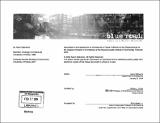| dc.contributor.advisor | William L. Porter. | en_US |
| dc.contributor.author | Malnarick, Aaron | en_US |
| dc.contributor.other | Massachusetts Institute of Technology. Dept. of Architecture. | en_US |
| dc.date.accessioned | 2006-03-24T18:17:29Z | |
| dc.date.available | 2006-03-24T18:17:29Z | |
| dc.date.copyright | 2004 | en_US |
| dc.date.issued | 2004 | en_US |
| dc.identifier.uri | http://hdl.handle.net/1721.1/30078 | |
| dc.description | Thesis (M. Arch.)--Massachusetts Institute of Technology, Dept. of Architecture, 2004. | en_US |
| dc.description | Some pages folded. Page 111 blank. | en_US |
| dc.description | Includes bibliographical references (p. 103-[108]). | en_US |
| dc.description.abstract | The Rock'n'Roll Hall of Fame in Cleveland, the Kansas City Jazz Museum, and the Experience Music Project in Seattle, illustrate the steady interest in memorializing music and its innovative creators. But these memorials, lavishly adorned with classic memorabilia and exuberant imagery, rely solely on formal and aesthetic qualities to honor the musical culture they are trying to describe. What if the "Museum" for music was actually a dynamic space that illustrated its medium through active performance and culture? Could traces in contemporary precedents be used to recite the history of a musical genre? Maybe music history can be better described through a series of strategically placed architectural interventions, rather than through the autonomous building typologies that are conventionally used? The purpose of this thesis is twofold. First, the proposal for developing a Blues Museum will establish a venue for delivering the Blues to a mass audience. Second, this investigation will challenge the notion of the music museum as a place for cultural inquiry. Rather than recreating the experience of the Blues primarily through cultural artifacts and memorabilia, this project utilizes contemporary "traces" to tell the story. The Blues transcended from a secluded rural environment to a dense urban one, and eventually to an international arena, without losing its original message. The design of this project celebrates this transformation through an experiential spectrum that one moves across through time - a series of performance modes across an evolving path. | en_US |
| dc.description.statementofresponsibility | by Aaron Malnarick. | en_US |
| dc.format.extent | 111 p. | en_US |
| dc.format.extent | 8022489 bytes | |
| dc.format.extent | 8022296 bytes | |
| dc.format.mimetype | application/pdf | |
| dc.format.mimetype | application/pdf | |
| dc.language.iso | eng | en_US |
| dc.publisher | Massachusetts Institute of Technology | en_US |
| dc.rights | M.I.T. theses are protected by copyright. They may be viewed from this source for any purpose, but reproduction or distribution in any format is prohibited without written permission. See provided URL for inquiries about permission. | en_US |
| dc.rights.uri | http://dspace.mit.edu/handle/1721.1/7582 | |
| dc.subject | Architecture. | en_US |
| dc.title | Blue road : what is a music museum | en_US |
| dc.type | Thesis | en_US |
| dc.description.degree | M.Arch. | en_US |
| dc.contributor.department | Massachusetts Institute of Technology. Department of Architecture | |
| dc.identifier.oclc | 55646527 | en_US |
